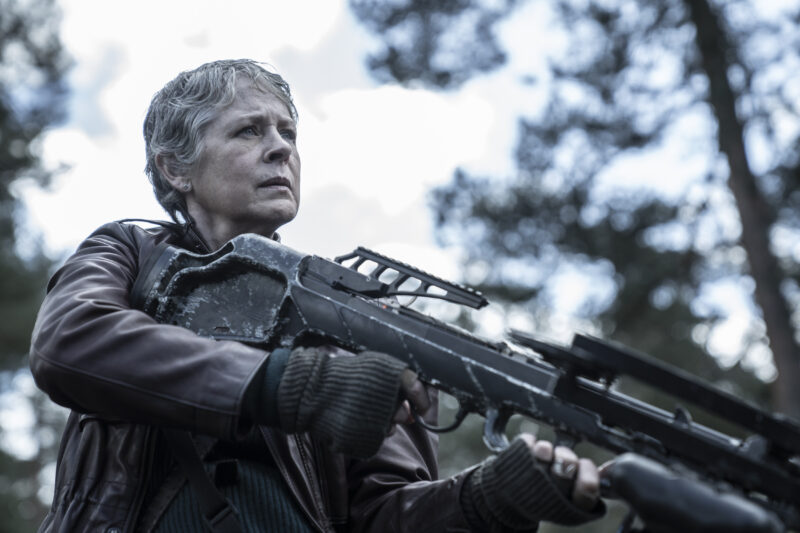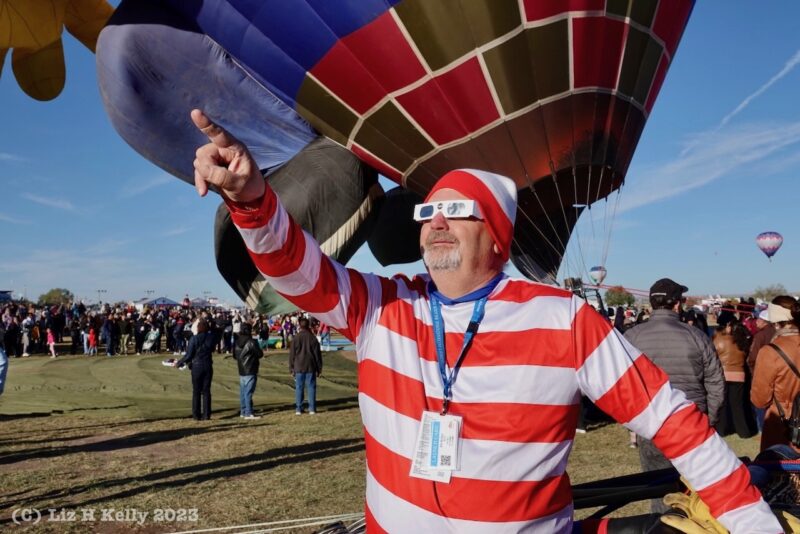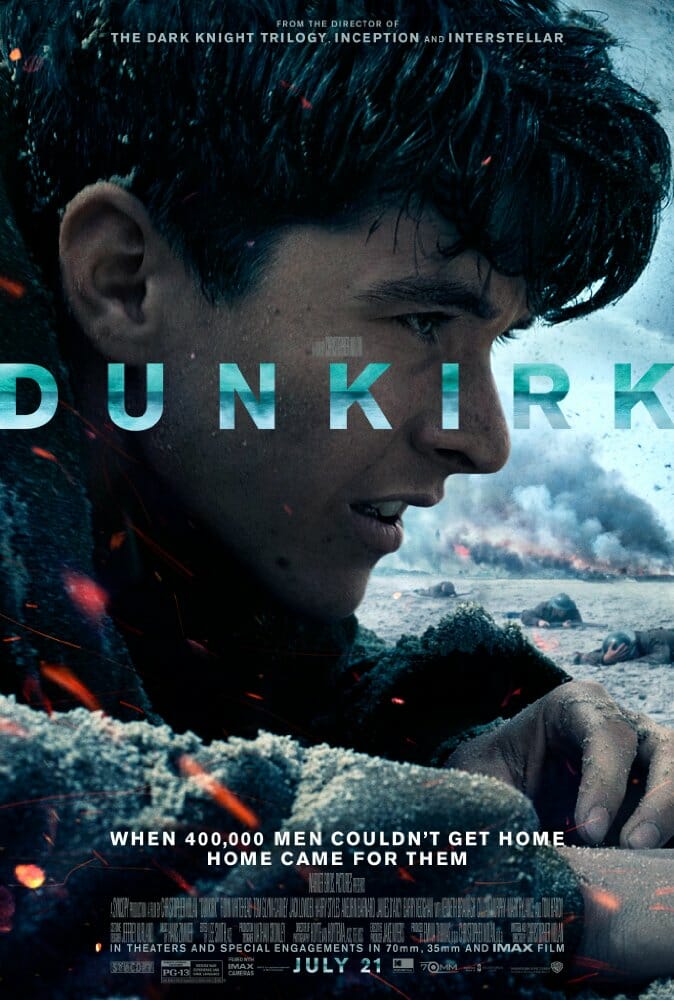Review by JD Piche, Red Carpet Report Senior Producer
follow JD on Twitter at @Misadventurer
Christopher Nolan’s “Dunkirk” makes one of the most harrowing weeks of World War 2 an intimate affair. We don’t follow one central character through the film, Nolan tells the story of the Dunkirk Evacuation, from May 27th – June 4th, 1940, the majority of the British and French Armies in Europe had been routed and forced to the sea in the French resort town of Dunkirk, an ever inching threat of annihilation as the off-screen Nazi army approaches, while the Luftwaffe circle and pick off the armies like birds of prey.
Between 330,000-400,000 men were trapped, in what could have been the biggest single massacre of any armed combat. Any Naval vessels that came near the trapped men, was bombed. England could have lost the war. There is another WW2 film out around the same time as Nolan’s Dunkirk, called “Darkest Hour” starring Gary Oldman as England’s War Time Prime Minister, Winston Churchill, as he gives his most famous speech, as an attempt to rally the British people. It came down to civilian vessels crossing the English Channel to rescue the stranded troops.

In Nolan’s version, we have several different points of view; Tom Hardy’s unnamed RAF pilot, who tries to defend the ships on the rescue mission. A couple unnamed soldiers, who brave every pitfall, in a cowardly effort. An English ship’s captain, his son and his son’s friend, one of the few named characters, George Mills, who pick up several marooned soldiers and sailors on their way to the French coast.
There are several other famous faces involved, none of whom have character names. In Nolan’s Dunkirk, it’s not about names, but how the anonymity inspires camaraderie, it doesn’t matter your name, as we are all facing the same foe. That’s the attempt at least.

Kenneth Branagh holds court at the end of a pier, at the French side, taking meetings, receiving intelligence, and making life and death choices that affect hundreds if not thousands of lives, and he barely moves. Cillian Murphy is the lone survivor of a ship taken out via U-Boat, he’s the first man saved by our unnamed pleasure boat captain, Murphy does little more than cry in close up and acts ‘shell-shocked’ as the old term for “post-traumatic stress disorder” was called. Boy Bander, Harry Styles, is one of the brave cowards, who do everything they can to cut in line and get home. Their characters aren’t particularly likable, all of their actions are selfish, and in a war film, selfish characters are the last people an audience should root for. Saving Private Ryan would have been a very different film if when Tom Hanks & Co asked the first person they ran across if they were “Private Ryan” and he said yes and got to go home from war early.

Where Nolan’s Dunkirk excels is the little details, the finery, and he captures the tone and look of how gray and bleak the war was. With the anonymity of all of the soldiers, what did feel real were their costumes. Hundreds of extras doffing brown woolen coats, canvas shirts, and machine pressed helmets. Tom Hardy’s pilot get-up looked so authentic you could nearly smell the leather of the ear cups.
The cinematography is also crisp, the serial numbers on various pieces of kit on a soldier were readable. Nolan does love his IMAX cameras, and they worked great here… when we got a larger scaled shot. IMAX is a little overkill when 80% of any speaking characters were in close up. It almost feels like the dog caught the proverbial car. To allude to another Nolan film.
“Dunkirk” is a passion project, this story is to the Brits, as “The Alamo” is to Texans, a moment of pride in self, and how the Human Spirit is indomitable. On the other hand, from a storytelling point of view, it was mostly just waiting for a water taxi. The journey from Dover to Dunkirk is about an hour by ship, as stated by a character in the film, and there’s a lot of waiting around.
The film also doesn’t show us, at any point, anything that remotely looked like 400,000 people waiting for a flotilla of fishing boats and day sailors. There are maybe 1000 extras on the beach scenes when they’re all donning the military wardrobe, is impressive, in a medium shot. There are plenty of tricks to turn 10 shirtless guys on a green screen into Leonidas’s 300 Spartans. Nolan just didn’t seem to want to sully his precious war film with green screen trickery to show the numbers.
Even while writing this review, a quick Google to get the dates of the “Miracle of Dunkirk” show more people in a single photo from a dune on the beach, than Nolan captured with his IMAX lens. The Score was manipulative, more so than most film scores, because eat a point when the unnamed… as close as we can call them, Protagonists, but they really aren’t… Cowards 1 & 2 were how I kept track of them, they pick up a stretcher with a wounded soldier on it, during a strafing run, one of the Nazi pilots managed to kill the original guys carrying the wounded. The Cowards pick him up and push past all 1000 extras, copy and pasted up and down the length of this pier, and the score is a tense chase theme, like Indiana Jones has a boulder rolling towards him, we’re meant to be cheering these guys, it seems like they’re doing something heroic. And they finally get their wounded stranger aboard a hospital ship, only to be kicked off, as non-essential personnel. The music then shifts to whimsy, as they’re now hanging in the support beams of the pier, if they can’t get aboard this ship, they’ll be the first aboard the next… Until this ship gets bombed, and they’re forced into another bout of heroics, saving Harry Styles from being squished by the ship slamming into the pier.

Dunkirk is one of Christopher Nolan’s shortest films, clocking in at 96 minutes, it manages to only feel like a languid two and a half hour epic, at half the running time. The timeline of what is going on, also shifts, which each different point of view character. Pilot Tom Hardy sees the first pleasure cruise vessel, on its way to the rescue, pick up Cillian Murphy, and a few other marooned soldiers, easily 20 minutes before we see it happening from the water level. Hardy’s plane runs out of fuel, with the Seaside village in sight, yet he spends what feels like the next 30 minutes in suspended animation in the air, until, oh no, a scary German bomber comes in and is about to get the cowards…. but gets taken down by Hardy, who has just enough airspeed to fly down the rest of the French coast, and manually hand pump his landing gear to touch down.

That last bit was genuinely a really “cool shot” but as you think about it, and try the Rashomon Rationalization of a non-linear story. You kind of get that the film really only has about 30 minutes of interesting war movie, stretched and padded out like a pretzel. There was nothing interesting about the ‘characters’ as there weren’t any, it was a parade of British Actors who when told “Nolan. Dunkirk.” jumped at the opportunity, like it was a civic duty. Nolan is lauded for his intensely cerebral concepts and lofty stories. This movie could work best if parts of it were cut into “Darkest Hour”.
3/10
Dunkirk” opens as hundreds of thousands of British and Allied troops are surrounded by enemy forces. Trapped on the beach with their backs to the sea they face an impossible situation as the enemy closes in.
Actors: Fionn Whitehead, Tom Glynn-Carney, Jack Lowden, Harry Styles, Aneurin Barnard, James D’Arcy, Barry Keoghan, Kenneth Branagh, Cillian Murphy, Mark Rylance, Tom Hardy
Director: Christopher Nolan
Producers: Christopher Nolan, Emma Thomas
Genre: Action & Adventure Mystery & Suspense Thriller
- https://www.dunkirkmovie.com
- https://www.facebook.com/Dunkirkmovie/
- https://twitter.com/dunkirkmovie
- http://instagram.com/dunkirkmovie/
Photo credit: Warner Bros
















